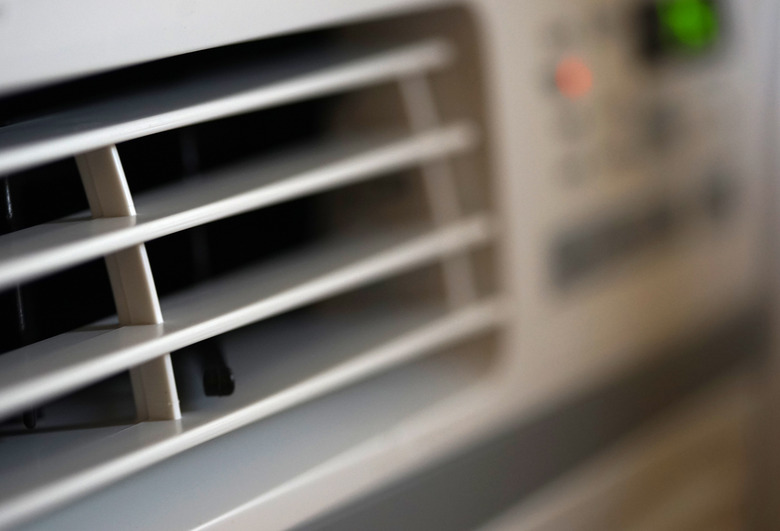How To Hook Up A 30-Amp Double-Pole Breaker
We may receive a commission on purchases made from links.
Most of the appliances and lights in a typical home run on 120-volt electricity, but a few draw too much power for that and need 240-volt electricity. Examples include dryers, water heaters, and furnaces. Each 240-volt appliance must be on a dedicated circuit controlled by a breaker rated for the current the appliance draws, which is specified on a label attached to the appliance. A room air conditioner is an example of an appliance that would require a 30-amp breaker.
Breakers that control 240-volt circuits are known as double-pole breakers. Each one is actually composed of two separate breakers permanently joined together. One breaker contacts one of the two 120-volt hot buses in the panel, and the other breaker contacts the other hot bus. When you connect a hot wire to one of the breakers and another hot wire to the other one, the voltage between the two hot wires is 240 volts.
A Double-Pole Breaker Isn't a Tandem Breaker
A Double-Pole Breaker Isn't a Tandem Breaker
A certain amount of confusion exists between a double-pole breaker and a tandem breaker, which also consists of two breakers joined together. The difference between them is that a tandem breaker, such as the QO tandem breaker from Square D, a leading manufacturer of panels and breakers, is actually a pair of single-pole breakers. It's designed to occupy a single slot in the panel and act as two independent 120-volt breakers. A tandem breaker provides a way to get more functionality from a panel that's close to full. Tandem breakers are usually rated for 15 or 20 amps, which is the number marked on the front. Double-pole breakers, on the other hand, are seldom rated for less than 30 amps.
The Basics of 240-Volt Wiring
The Basics of 240-Volt Wiring
Electricity comes to the panel through a pair of hot wires with a voltage of 240 volts between them. Each connects to a bus bar, and 120-volt circuits draw power from one or the other of these bus bars, so a 120-volt circuit breaker is designed to contact only one bar. The bars are designed in an S shape so that successive breakers contact each one alternately. A 240-volt breaker occupies two slots in the panel, so it contacts both bus bars.
A 240-volt circuit needs a three-conductor cable with a minimum wire gauge of 10 AWG. The cable has two hot wires, colored red and black; a neutral wire; and a ground (which isn't considered a conductor). Each hot wire connects to one of the two terminals on the double-pole breaker, the neutral wire gets attached to the neutral bus in the panel, and the ground wire goes on the ground bus.
Installing a 30-Amp Double-Pole Breaker
Installing a 30-Amp Double-Pole Breaker
Circuit breakers aren't interchangeable from panel to panel, so when you purchase your breaker, make sure you get one from the company that manufactured your panel. Square D, Siemens, and GE are some of the leading brands.
The cable powered by the two-pole breaker also needs to be securely attached to the box or panel with a listed connector. After you strip an inch of insulation from each of the wires in the cable, connect the white wire to an available lug on the neutral bus in the panel and the ground wire to the ground bus. Connect the red wire to the lug on one of the breaker terminals (it doesn't matter which one) and the black wire to the other terminal. The breaker usually hooks or snaps into the chosen slot. Remember that you need two adjacent slots for a double-pole breaker. Once the breaker is in place and you turn it on, the circuit is energized.
Working in the panel is dangerous because the hot bus bars are always energized. Because of the danger of shock, it's best to hire a pro to connect breakers.
